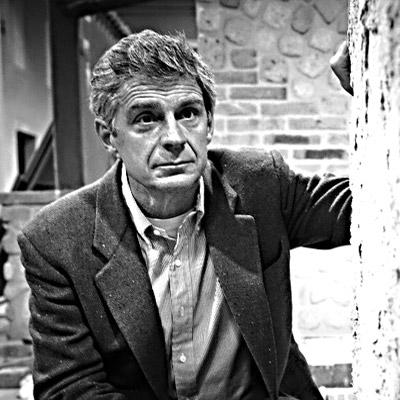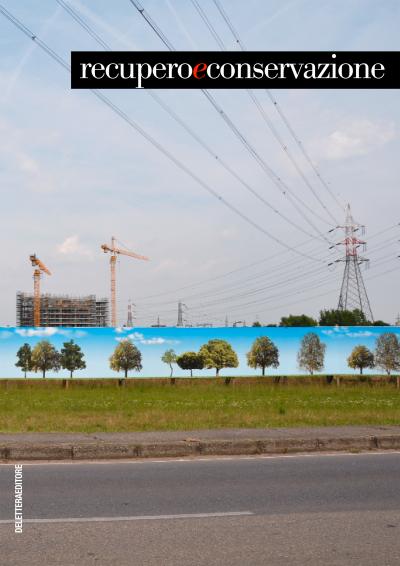"UNA REPUBBLICA DEMOCRATICA FONDATA SUL TURISMO"
E’ ampiamente nota la polemica sorta di recente attorno alla ricostruzione delle 7 colonne del Foro Romano: un’operazione di anastilosi tipica degli anni ‘50/60 quando il restauro architettonico e archeologico non avevano ancora maturato i raffinati e cauti criteri che li caratterizzano ora. Questa “valorizzazione”, diciamo datata, fuori dal tempo e dalla cultura, che modifica in modo irreversibile un contesto archeologico di eccezionale valore, sedimentato e stratificato da secoli, sembra frutto di una volontà “pre-tecnologica”, ossia di un progettista del secolo scorso proiettato ad oggi da una macchina del tempo. Ciò per due motivi: in prima istanza perché questa ricostruzione ignora la potenza raggiunta oggi dalle tecnologie virtuali, dai sistemi 3d, dalle realtà aumentate, non conosce le potenzialità delle audio e video guide delle ultime generazioni e di tutte le tecnologie che moltiplicano le potenzialità di percezione del contesto monumentale che si sta osservando; con queste modalità il turista sceglie sia di percorrere un’esperienza di ricostruzione totale, visualizzando molteplici dati in successione voluta o casuale sia, al contrario, di contemplare le rovine archeologiche autentiche, che il tempo ci ha lasciato, facendo leva sulla propria immaginazione, cultura, studio e informazione.

CINEMA E ARCHITETTURA
Gli architetti possono imparare molto da tutte le arti ma in modo particolare dal cinema. Sia il cinema che l'architettura creano lo spazio esistenziale dell'esperienza umana e immaginano mondi reali e mentali. La staticità dell'architettura e il movimento del cinema sembrano due aspetti inconciliabili. Ma niente di più falso: sono due modi paralleli di guardare la vita. Entrambi possono accrescersi positivamente.
MOVIE AND ARCHITECTURE
Architects culd learn lot from al arts but olso from cinema. Both cinema that architecture creates esistential space of human esperience and immagine real words and mental one. The static nature of architecture and the movement of the film seem to be two irreconciliabile worlds. But it wose in error. Are two parallel ways of looking at life. Both can grow positively.
SOSTENIBILITA’ ENERGETICA NEL PROGETTO DI RESTAURO
La Casa del Mutilato di Forlì rappresenta un esempio del programma Fascista per la reintegrazione dei reduci di guerra. L'opera, costruita da Cesare Bazzani, non rispondendo più all'originaria funzione previdenziale mostra oltre al consueto degrado materico anche quello funzionale. Il progetto di restauro, che trova sviluppo attraverso l’applicazione del protocollo di certificazione GBC Historic Building®, propone un possibile intervento, attraverso un modus operandi, che concilia i principi del restauro con il miglioramento energetico-ambientale della materia storica.
ENERGY AND PERFORMANCE SUSTAINABILITY IN RESTORATION PROJECT
Nowadays, the House of the Mutilated of Forlì represents an example in the Fascist program for the reintegration of war veterans. As the work, built by Cesare Bazzani, does no longer correspond to the original function of social security, it shows besides the usual material degradation as well as the functional one. The restoration project, supported by the guidelines of the certification protocol GBC Historic Building®, proposes a possible intervention, through a modus operandi that conjugates the principles of restoration with the energy-performance improvement of the historical material.
PAESAGGI CONTESI, VERSUS L’AGRICOLTURA DI PLASTICA
Attorno al sito di Expo 2015 il paesaggio è cambiato negli ultimi anni. Nuove infrastrutture, nuovi edifici, nuovi boschi, parchi e piste ciclabili hanno profondamente modificato il paesaggio, consumando e frammentando il suolo agricolo. Le trasformazioni vanno chiaramente nella direzione di un’urbanizzazione di un settore dell’area metropolitana, in contraddizione con gli obiettivi di Expo 2015. Scompare l’agricoltura e compare una nuova forma urbana. L’agricoltura è ridotta alla sua mera rappresentazione, mucche di plastica per la gioia dei bambini in una finta cascina.
DISPUTED LANDSCAPE. TOWARDS A PLASTIC AGRICOLTURE
All around the Expo 2015 location landscape changed in recent years. New infrastructures, new buildings, new forests, parks and bike paths radically changed the landscape, consuming the soil and fragmenting the agricultural land. The changes are clearly towards a form of new urbanization of a whole metropolitan area sector, in contradiction with the objectives of Expo 2015. Agriculture is going to disappeare and rise a new urban form. Agriculture is reduced to its mere representation, plastic cows to enjoy children in a artificial farm.
LA STIMA DI UN BENE STORICO-ARCHITETTONICO
Definito il concetto di “bene culturale” e dei valori che esso incarna, è necessario studiare quali strumenti possano essere impiegati per attuare e concretizzare progetti di valorizzazione di siti di interesse storico, nello specifico il processo di alienazione. Risultano, perciò, determinanti il momento della stima ed il ruolo del valutatore.
Si vuole, quindi, studiare il processo di stima e la formazione della funzione di valutazione della tipologia edilizia Villa Veneta. Attraverso lo strumento di regressione si analizzano le caratteristiche dell’immobile che risultano essere maggiormente significative per individuare il più probabile valore di mercato.
THE VALUATION OF HISTORICAL HERITAGE
For over a century, the condition of abandonment of the historical heritage has been the center of political and legal discussions. The historical heritage enhancement has been mainly treated focusing on the concept of cultural heritage, as presented by regulations, which have taken place from the 800s to the present day. This showed that over time an awareness of the economic value of those assets, and the need for their conservation and enhancement, has developed.
After defining the concept of cultural heritage and its values, the paper explores the tools used for implementing the enhancement projects, in particular, the alienation process. As regards the latter, the valuation moment and the role of the valuer become strategic.
This paper aims to underline how the historical assets are totally heterogeneous and dissimilar, and for this reason, consolidated valuation techniques do not exist in literature or in practice. It is, therefore, necessary to dwell on the study of a particular historical building type, such as that of the Venetian Villas. They are widespread in the territories included between the regions of Veneto and Friuli Venezia Giulia, and represent a unique architectural testimony, in national and international context, of a process of an urban civilization rootedness (Republic of Venice) in a rural area. The Venetian nobility, from the XIV century, bought properties and invested significant amounts in agriculture. In those properties, villas were built assuming the double function of place of leisure and center of the farm. The traditional techniques for historical buildings valuation have to deal with many issues, such as externalities, intangible effects, long-term perspective so that it is quite difficult to value a cultural asset. For instance, the Market comparison approach requires a series of historical data that are not always easy to find, while the Discounted Cash Flow Analysis that applies only to cases where a detailed transformation project already exists, and the Cost Approach, that considers appreciation added percentages, often arbitrary, to emphasize the property artistic value.
Therefore, the rationality and the behavior of the valuers of this type of assets were explored, focusing on the study of the valuation process and function, with the application of multiple linear regression, analyzing, its results and data relating to the variance.
VALORIZZAZIONE DI UN BENE ECCLESIASTICO MINORE
La Chiesa è depositaria di un patrimonio di espressioni storiche e artistiche che rivestono un particolare ruolo nella sfera religiosa e sociale italiana.
Rispetto alle tematiche di valorizzazione dei beni culturali in genere, la valorizzazione dei beni della Chiesa porta con sé alcune criticità, ma allo stesso tempo nuove prospettive, in relazione alle particolarità degli elementi che li caratterizzano.
Il restauro del Beato Enrico a Treviso, intende proporsi come caso significativo per la costituzione di un modello di valorizzazione di un bene culturale ecclesiastico, in particolare di 'architettura minore'.
A CASE TYPE FOR THE ENHANCEMENT OF CHURCH'S HERITAGE
Church's heritage are a historical and artistic expressions, that have assumed a very particular role in Italy’s religious and social spheres. Taking into account the problems of governance, management, and the enhancement of cultural heritage in general, enhancing the Church’s heritage comes with some critiques, but, at the same time, opens new prospects, because of the specific elements that characterize it.
The analysis of a case study, restoration Beato Enrico in Treviso, identifies the main reflecting on the diffusion of models of development that are coherent with the process of enhancing Italian ecclesiastic heritage and, in particular, that of 'minor architecture'.

